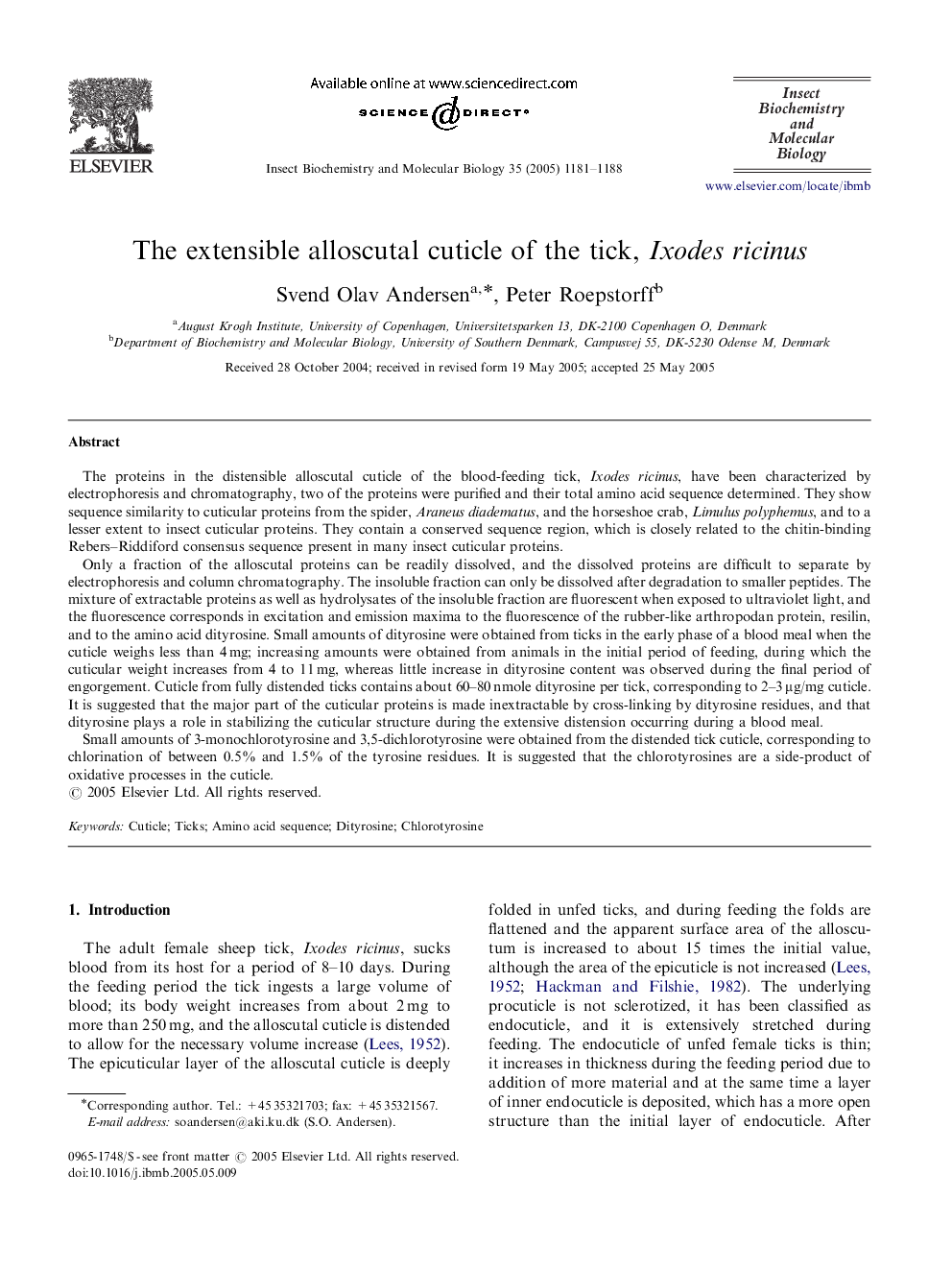| Article ID | Journal | Published Year | Pages | File Type |
|---|---|---|---|---|
| 10824377 | Insect Biochemistry and Molecular Biology | 2005 | 8 Pages |
Abstract
Small amounts of 3-monochlorotyrosine and 3,5-dichlorotyrosine were obtained from the distended tick cuticle, corresponding to chlorination of between 0.5% and 1.5% of the tyrosine residues. It is suggested that the chlorotyrosines are a side-product of oxidative processes in the cuticle.
Related Topics
Life Sciences
Agricultural and Biological Sciences
Insect Science
Authors
Svend Olav Andersen, Peter Roepstorff,
